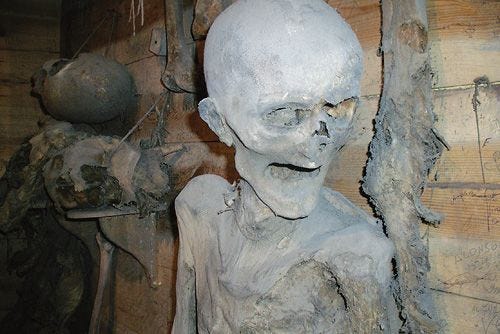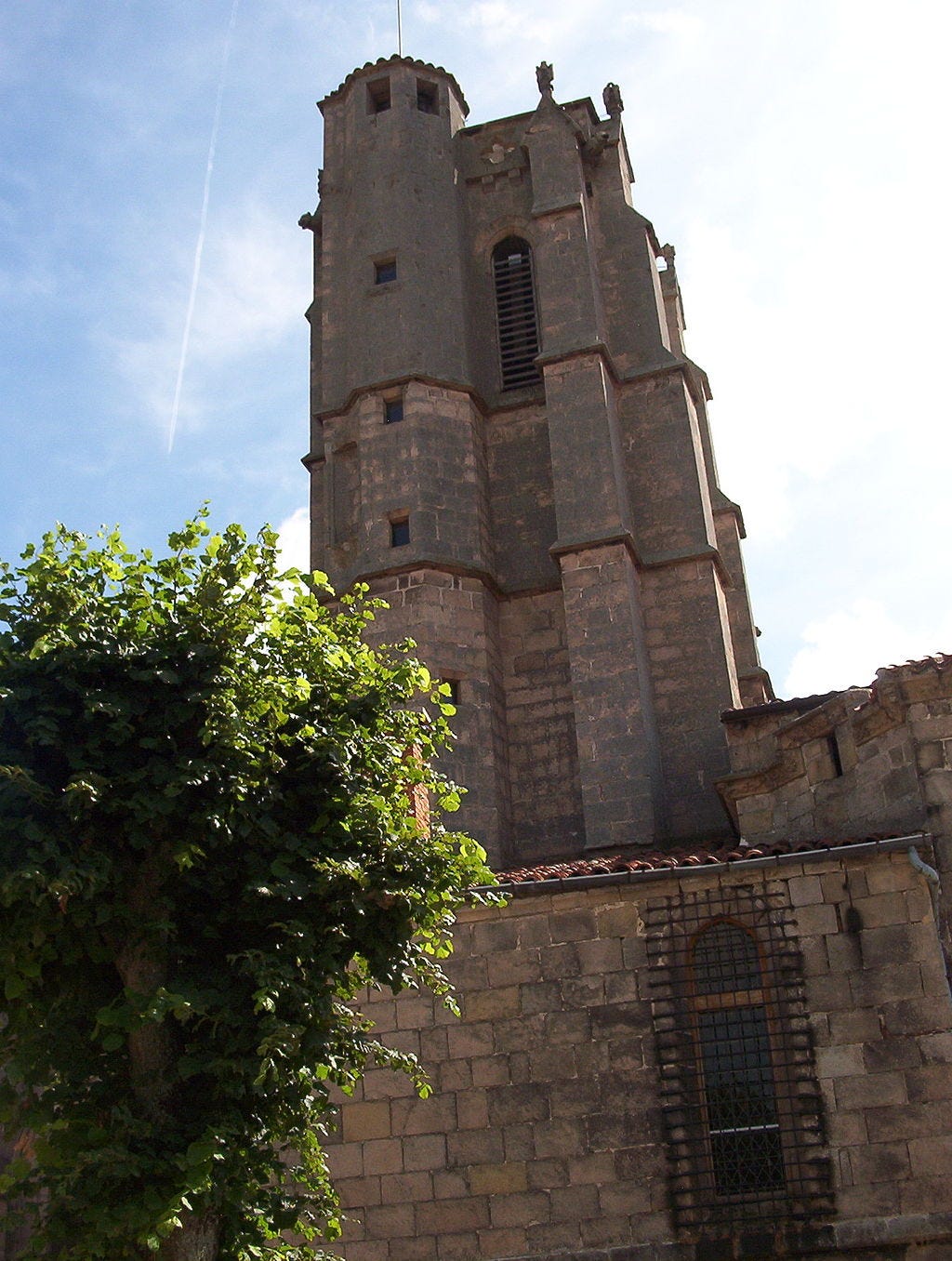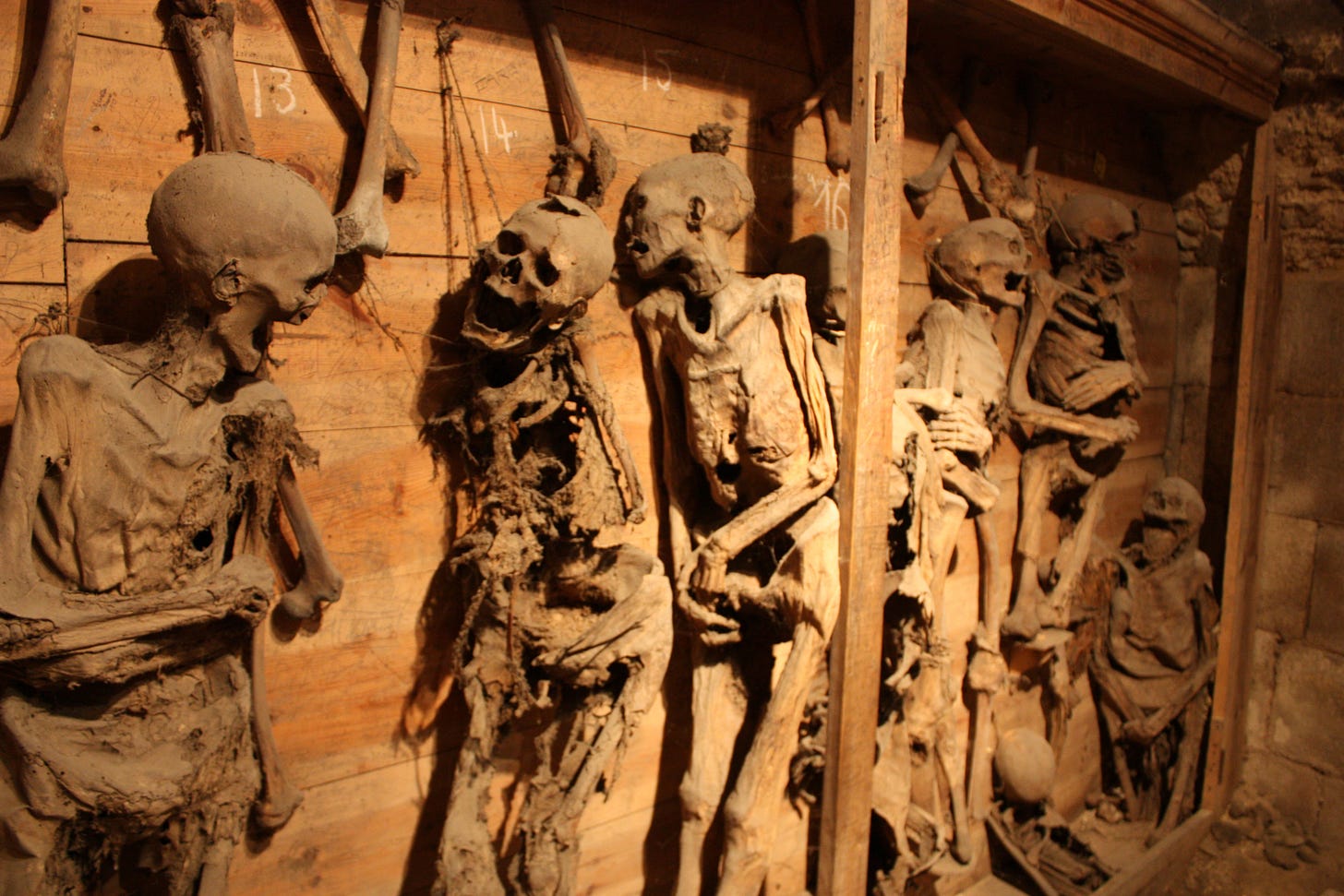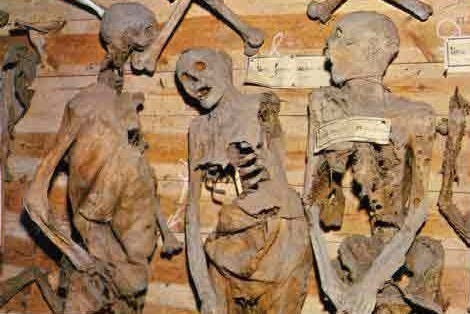Despite centuries of turmoil, France remains a treasure-house of the faith, and although reformation, revolution, and secularism have left their marks she remains the Eldest Daughter of the Church.1 The Collégiale (Collegiate Church) de Saint-Bonnet-le-Château, and the objects discovered in one of its crypts, illustrate some of that tumultuous history.
A "collegiate church" is a bit of an oddity in that it somewhat resembles a cathedral but is not the seat a bishop. Rather, it is under the control of a college of canons, and although attached to a diocese has an element of self-governance and may historically controls lands and benefices.
A church was built in Saint-Bonnet-le-Château at least as early as the 12th century, but the beautiful gothic structure that survives was begun in the 14th century and expanded over the years. It amassed an impressive library and a collection of religious items, and the lower chapel contains an extraordinary sequence of frescoes and tombs. The tallest tower provides a panoramic view of the Loire region.
That any of this has survived is nothing short of a miracle. The horrors began during the Wars of Religion, when the monstrous Huguenot leader François de Beaumont took the town and the cathedral. In 1562, de Beaumont had already given the Protestants a series of victories, seizing several towns, hanging governors, plundering churches, slaughtering garrisons, and committing multiple massacres. His favorite techniques appears to have been taking Catholic leaders to the top of their bell towers and making them jump to their deaths. Some of those forced to make the leap were the canons of Saint-Bonnet.
de Beaumont eventually switched sides but found that, oddly enough, no one trusted him, and he died after retiring to estate. The church survived the Reformation and continued to expand. Its canons amassed a collection of more than 2,000 books and manuscripts, establishing a library and a fund for their upkeep. Saint-Bonet was also filled with crypts holding the remains of the canons and the faithful citizenry.
Neither books nor humans remains were destined to survive the Revolution, however, and in 1782 Saint-Bonnet was plundered, the books scattered or destroyed, and the tombs defiled. Nothing remained.
Or so everyone thought for about 50 years. In 1837, a hidden crypt was discovered and opened, and inside were approximately 40 bodies in a remarkable state of preservation. They had not been deliberately mummified, but the dry air combined with alum and arsenic in the ground had worked to preserve them nonetheless.
Lurid stories immediately spread: these were the murdered canons, somehow hidden by secret survivors, they were faithful who had been walled up alive, they were plague victims whose remains had been hidden to prevent the spread of the disease. Their preservation was initially thought to be a miracle by some, and there was a question of whether or not the martyred canons could be canonized.
The stories persisted until relatively recently, when the remains were subjected to more thorough testing. Carbon-14 dating showed a spread of different internments from the 14th to 17th centuries. This suggests a more mundane truth: it was likely the crypt of a single noble family, used throughout the centuries.
Aside from its gruesome denizens, the church is quite beautiful, and this detailed look at the frescos is worth your time:
The sobriquet stems from the conversation of Clovis around 508.











